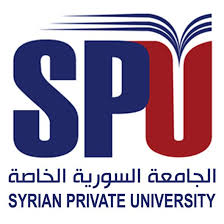اشترك بالحزمة الذهبية واحصل على وصول غير محدود شمرا أكاديميا
تسجيل مستخدم جديدThe ModelCC Model-Driven Parser Generator
285
0
0.0
(
0
)
تأليف
Fernando Berzal
اسأل ChatGPT حول البحث

ﻻ يوجد ملخص باللغة العربية
Syntax-directed translation tools require the specification of a language by means of a formal grammar. This grammar must conform to the specific requirements of the parser generator to be used. This grammar is then annotated with semantic actions for the resulting system to perform its desired function. In this paper, we introduce ModelCC, a model-based parser generator that decouples language specification from language processing, avoiding some of the problems caused by grammar-driven parser generators. ModelCC receives a conceptual model as input, along with constraints that annotate it. It is then able to create a parser for the desired textual syntax and the generated parser fully automates the instantiation of the language conceptual model. ModelCC also includes a reference resolution mechanism so that ModelCC is able to instantiate abstract syntax graphs, rather than mere abstract syntax trees.
قيم البحث
اقرأ أيضاً
In this paper, we present a derivative-based, functional recognizer and parser generator for visibly pushdown grammars. The generated parser accepts ambiguous grammars and produces a parse forest containing all valid parse trees for an input string i
n linear time. Each parse tree in the forest can then be extracted also in linear time. Besides the parser generator, to allow more flexible forms of the visibly pushdown grammars, we also present a translator that converts a tagged CFG to a visibly pushdown grammar in a sound way, and the parse trees of the tagged CFG are further produced by running the semantic actions embedded in the parse trees of the translated visibly pushdown grammar. The performance of the parser is compared with a popular parsing tool ANTLR and other popular hand-crafted parsers. The correctness of the core parsing algorithm is formally verified in the proof assistant Coq.
There is increasing interest in applying verification tools to programs that have bitvector operations (eg., binaries). SMT solvers, which serve as a foundation for these tools, have thus increased support for bitvector reasoning through bit-blasting
and linear arithmetic approximations. In this paper we show that similar linear arithmetic approximation of bitvector operations can be done at the source level through transformations. Specifically, we introduce new paths that over-approximate bitvector operations with linear conditions/constraints, increasing branching but allowing us to better exploit the well-developed integer reasoning and interpolation of verification tools. We show that, for reachability of bitvector programs, increased branching incurs negligible overhead yet, when combined with integer interpolation optimizations, enables more programs to be verified. We further show this exploitation of integer interpolation in the common case also enables competitive termination verification of bitvector programs and leads to the first effective technique for LTL verification of bitvector programs. Finally, we provide an in-depth case study of decompiled (lifted) binary programs, which emulate X86 execution through frequent use of bitvector operations. We present a new tool DarkSea, the first tool capable of verifying reachability, termination, and LTL of lifted binaries.
Programmers often leverage data structure libraries that provide useful and reusable abstractions. Modular verification of programs that make use of these libraries naturally rely on specifications that capture important properties about how the libr
ary expects these data structures to be accessed and manipulated. However, these specifications are often missing or incomplete, making it hard for clients to be confident they are using the library safely. When library source code is also unavailable, as is often the case, the challenge to infer meaningful specifications is further exacerbated. In this paper, we present a novel data-driven abductive inference mechanism that infers specifications for library methods sufficient to enable verification of the librarys clients. Our technique combines a data-driven learning-based framework to postulate candidate specifications, along with SMT-provided counterexamples to refine these candidates, taking special care to prevent generating specifications that overfit to sampled tests. The resulting specifications form a minimal set of requirements on the behavior of library implementations that ensures safety of a particular client program. Our solution thus provides a new multi-abduction procedure for precise specification inference of data structure libraries guided by client-side verification tasks. Experimental results on a wide range of realistic OCaml data structure programs demonstrate the effectiveness of the approach.
Parametric model checking (PMC) computes algebraic formulae that express key non-functional properties of a system (reliability, performance, etc.) as rational functions of the system and environment parameters. In software engineering, PMC formulae
can be used during design, e.g., to analyse the sensitivity of different system architectures to parametric variability, or to find optimal system configurations. They can also be used at runtime, e.g., to check if non-functional requirements are still satisfied after environmental changes, or to select new configurations after such changes. However, current PMC techniques do not scale well to systems with complex behaviour and more than a few parameters. Our paper introduces a fast PMC (fPMC) approach that overcomes this limitation, extending the applicability of PMC to a broader class of systems than previously possible. To this end, fPMC partitions the Markov models that PMC operates with into emph{fragments} whose reachability properties are analysed independently, and obtains PMC reachability formulae by combining the results of these fragment analyses. To demonstrate the effectiveness of fPMC, we show how our fPMC tool can analyse three systems (taken from the research literature, and belonging to different application domains) with which current PMC techniques and tools struggle.
377 -
Martin Lange (School of Electrical Engineering
, Computer Science
, n University of Kassel
2012
The higher-dimensional modal mu-calculus is an extension of the mu-calculus in which formulas are interpreted in tuples of states of a labeled transition system. Every property that can be expressed in this logic can be checked in polynomial time, an
d conversely every polynomial-time decidable problem that has a bisimulation-invariant encoding into labeled transition systems can also be defined in the higher-dimensional modal mu-calculus. We exemplify the latter connection by giving several examples of decision problems which reduce to model checking of the higher-dimensional modal mu-calculus for some fixed formulas. This way generic model checking algorithms for the logic can then be used via partial evaluation in order to obtain algorithms for theses problems which may benefit from improvements that are well-established in the field of program verification, namely on-the-fly and symbolic techniques. The aim of this work is to extend such techniques to other fields as well, here exemplarily done for process equivalences, automata theory, parsing, string problems, and games.
سجل دخول لتتمكن من نشر تعليقات
التعليقات
جاري جلب التعليقات


سجل دخول لتتمكن من متابعة معايير البحث التي قمت باختيارها


